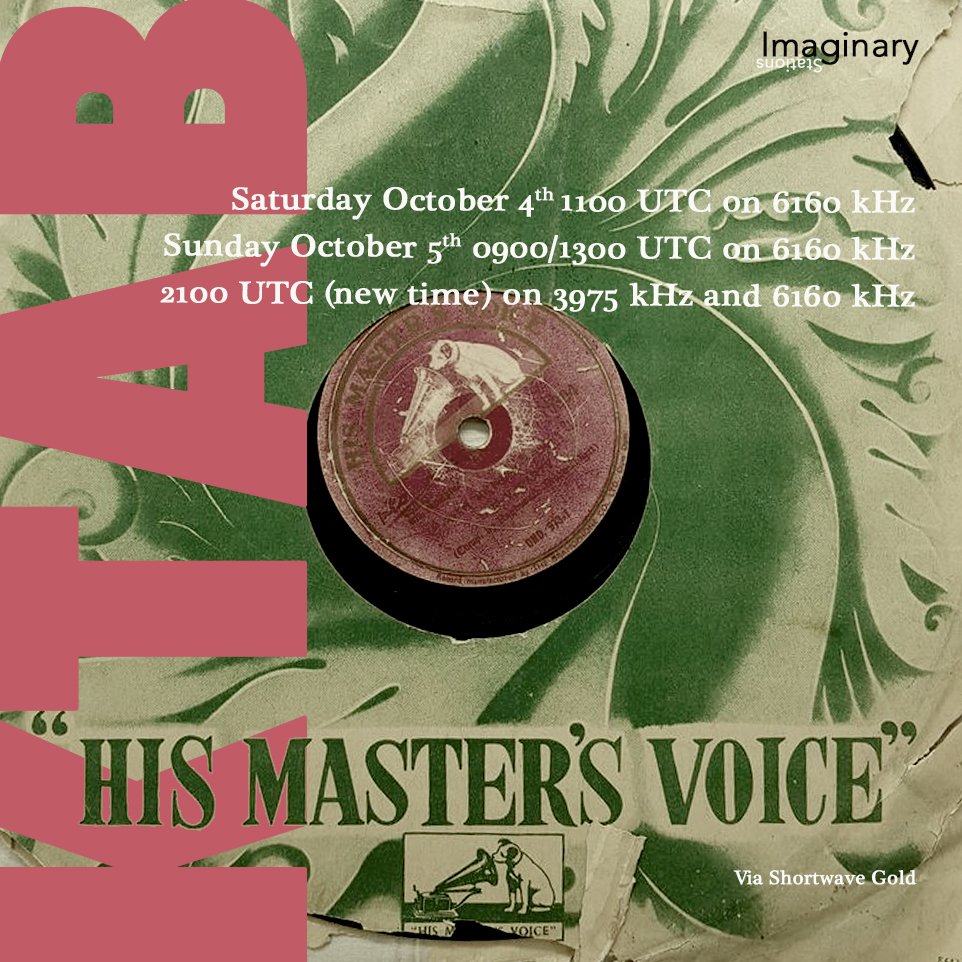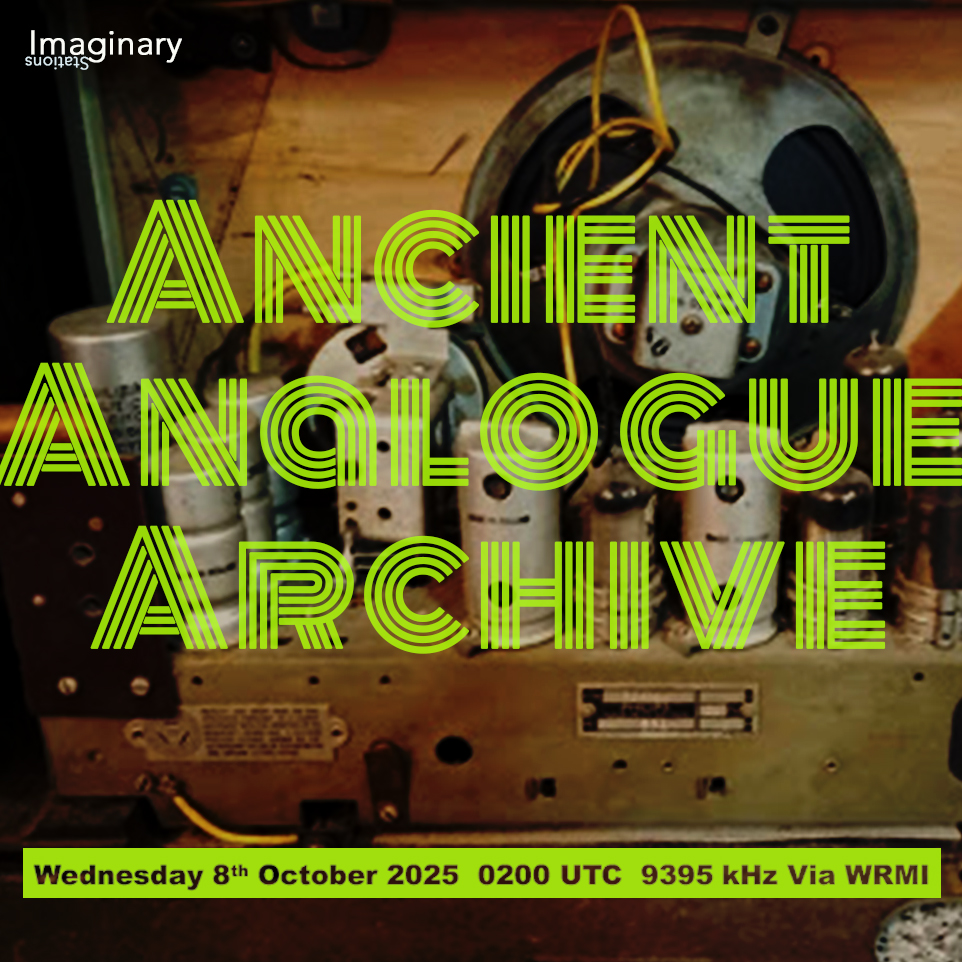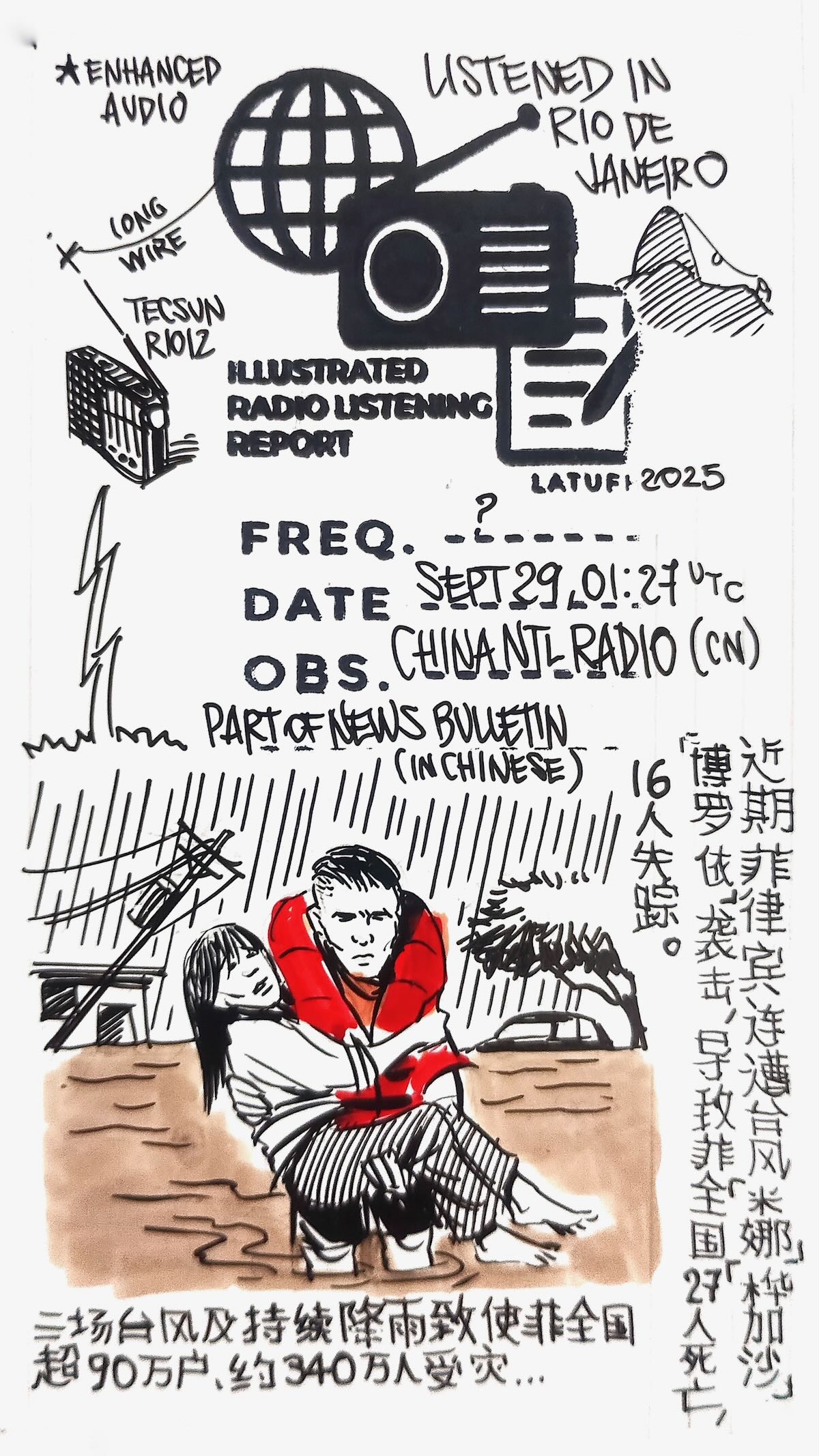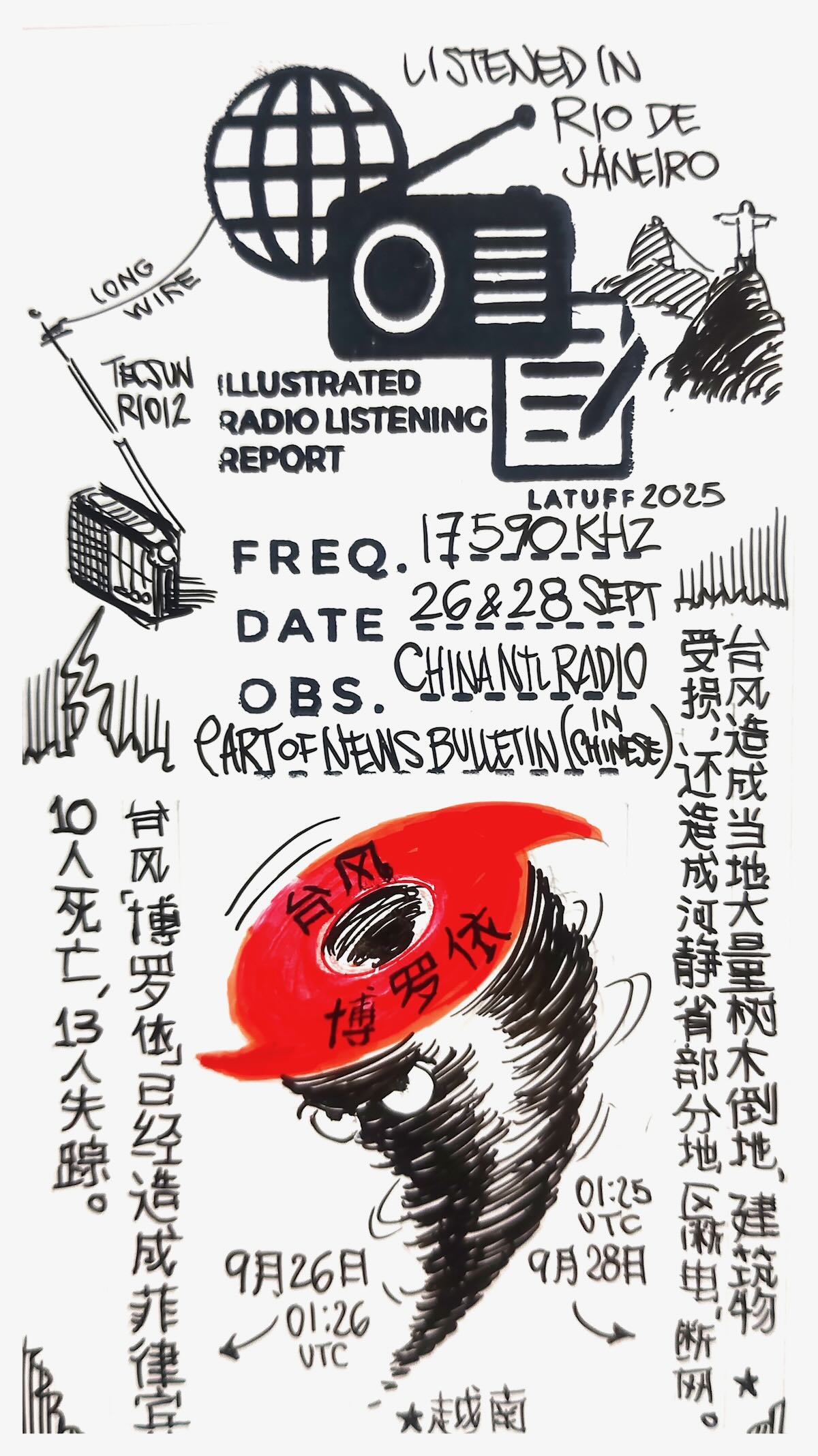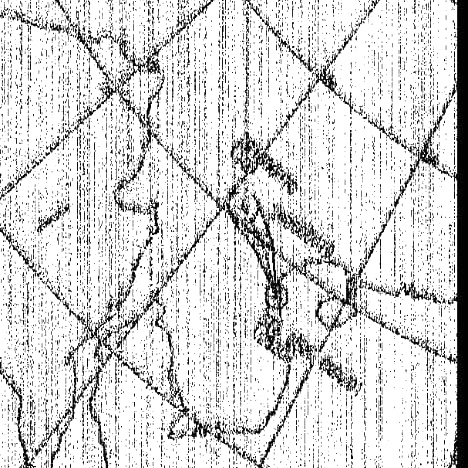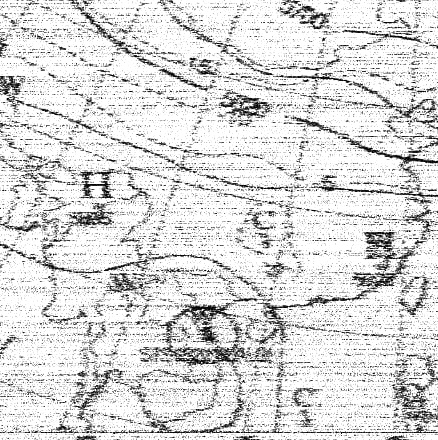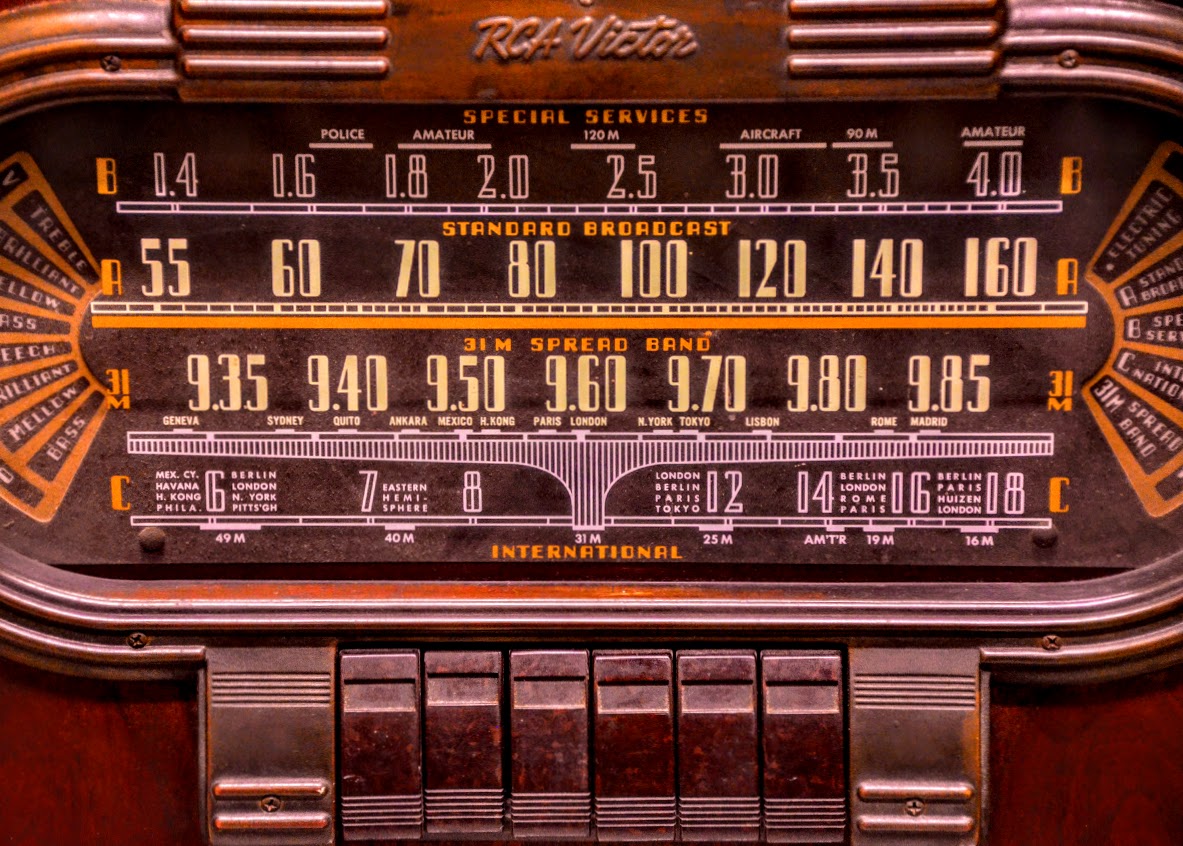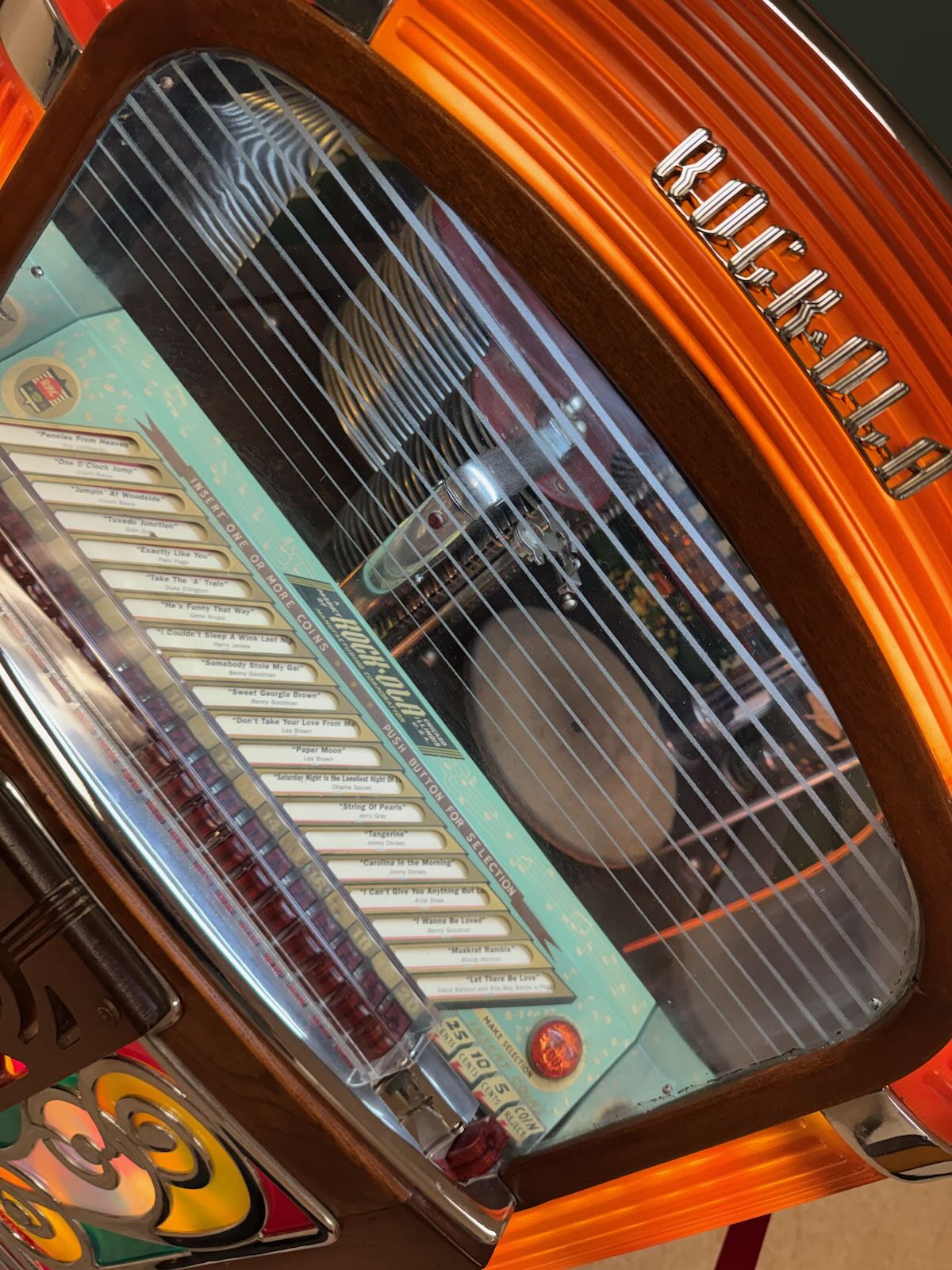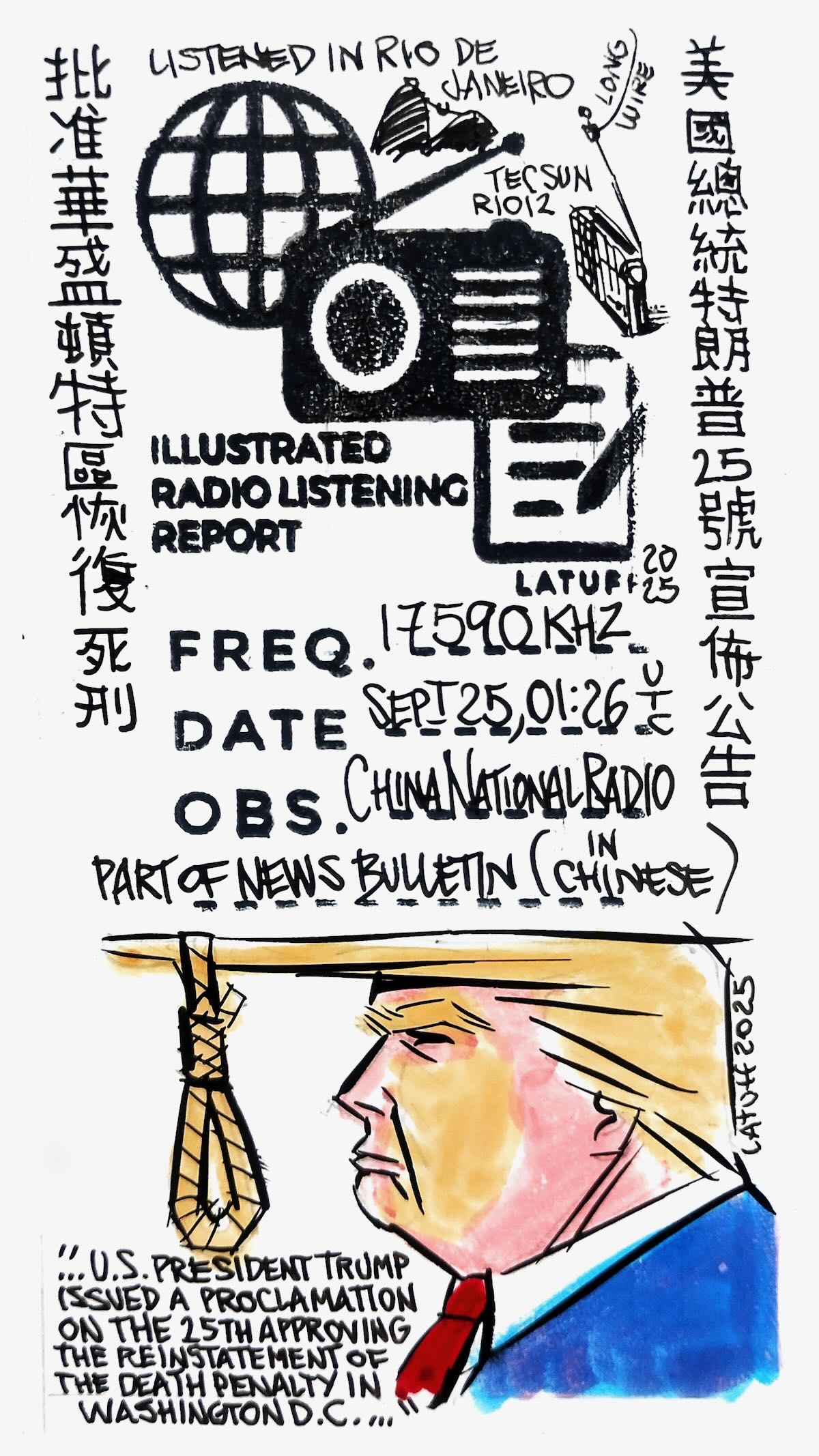Greetings all SWLing Post community, here’s more about what the Imaginary Stations crew will be broadcasting via those shortwaves this week on Saturday 4th October 2025 at 1100 hrs UTC on 6160 kHz and then again on Sunday 5th October 2025 at 0900/1300 hrs UTC on 6160 kHz and at 2100 UTC (new time slot) on 3975 kHz and 6160 kHz.
It’ll be another trip in time travelling again (via the transmitters at Shortwave Gold) with KTAB – Time Anomaly Broadcasting (the second edition). They’ll be all sorts of great tunes from yesteryear so expect more snap, crackle and pop and even more scratchy 78rpm records and the odd Edison cylinder thrown in for good measure. So step forwards, sideways and backwards in time via that shortwave dial this weekend.
On Wednesday 8th October 2025 at 0200 UTC via WRMI we have an episode of the Ancient Analogue Archive (where we dig deep into the forgotten music on archive.org). So more interesting musical business over the airwaves from Imaginary Stations.
For more information on all our shows, please write to us at [email protected] and check out our old shows at our Mixcloud page here.
FastRadioBurst23

